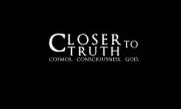 After 20 years of research and work, Conrad Rudolph, a professor of medieval art history at the University of California, Riverside, has finished a digital reconstruction of "The Mystic Ark," a mural painted by 12th-century theologian Hugh of Saint Victor. The mural, probably painted on a cloister wall, was likely used by Hugh to teach his most promising students his conception of the history of salvation.
After 20 years of research and work, Conrad Rudolph, a professor of medieval art history at the University of California, Riverside, has finished a digital reconstruction of "The Mystic Ark," a mural painted by 12th-century theologian Hugh of Saint Victor. The mural, probably painted on a cloister wall, was likely used by Hugh to teach his most promising students his conception of the history of salvation.
Using a variety of computer-based programs and a 42-page description written by one of these pupils—all that remains of the original work—Rudolph was able to combine designs and pieces from similar works of the time to create a close approximation of the mural. Among the symbols used in the painting are zodiac signs, a map of the world during the Exodus, and the image of Jesus flanked by angels. The mural is said to depict all time, all space, all matter, all of human history, all of human learning, and all of human spiritual endeavor from the beginning of time until the Last Judgment.
“Hugh painted this as the basis of an advanced seminar that dealt with religious issues of a politically sensitive nature,” Rudolph says. “This was that moment in Western culture when secular learning was just beginning to be taken up for its own sake rather than necessarily being directed specifically toward salvation and the study of the Bible.”
A life-size version of the re-created mural, standing 13 feet by 15 feet, will be displayed throughout the month at the National Gallery of Art in Washington, D.C. —Stephen Mapes
Monday, December 15, 2008
Medieval Mural Finally Restored, Digitally
Posted by Heather Wax at 9:08 AM
Labels: Technology
Subscribe to:
Post Comments (Atom)



1 comments:
This is so interesting. Given the reference to "all time, all space, all matter, all of human history, all of human learning, and all of human spiritual endeavor," the mural visually depicts a cosmology specifically refecting Hugh of Saint Victor's mystical, philosophical, and theological beliefs. Thanks for the links.
Post a Comment